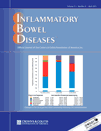Temporal trends in disease outcomes related to Clostridium difficile infection in patients with inflammatory bowel disease†‡
This work was presented in part as an oral presentation at Digestive Disease Week 2010, New Orleans, LA.
Author contributions: Study concept and design (Ananthakrishnan, Binion); acquisition of data (McGinley); analysis and interpretation of data (Ananthakrishnan, McGinley, Saeian, Binion); drafting of the article (Ananthakrishnan); critical revision of the article for important intellectual content (Ananthakrishnan, McGinley, Saeian, Binion); statistical analysis (Ananthakrishnan, McGinley).
Abstract
Background:
Clostridium difficile has emerged as an important pathogen in patients with inflammatory bowel disease (IBD) and is associated with increased morbidity and mortality. No studies have examined the temporal change in severity of C. difficile infection (CDI) complicating IBD.
Methods:
Using data from the Nationwide Inpatient Sample, we identified all IBD-related hospitalizations during the years 1998, 2004, and 2007 and examined hospitalizations with a coexisting diagnosis of C. difficile. We compared the absolute outcomes of in-hospital mortality and colectomy in the C. difficile-IBD cohort during these timepoints, and also examined these outcomes relative to non-C. difficile IBD controls during each corresponding year.
Results:
During 1998, 2004, and 2007, approximately 1.4%, 2.3%, and 2.9% of all IBD hospitalizations nationwide were complicated by CDI (P < 0.001). The absolute mortality in the C. difficile-IBD cohort increased from 5.9%–7.2% (P = 0.052) with a nonsignificant increase in colectomy rate from 3.8%–4.5% between 1998 and 2007. Compared to non-C. difficile IBD controls, there was an increase in the relative mortality risk associated with C. difficile from 1998 (odds ratio [OR] 2.38, 95% confidence interval [CI]: 1.52–3.72) to 2007 (OR 3.38, 95% CI: 2.66–4.29) (P = 0.15) with a significant increase in total colectomy odds from 1998 (OR 1.39, 95% CI: 0.81–2.37) to 2007 (OR 2.51, 95% CI: 1.90–3.34) (P = 0.03).
Conclusion:
There has been a temporal increase nationwide in CDI complicating IBD hospitalizations. The excess morbidity associated with C. difficile infection in hospitalized IBD patients has increased between 1998 and 2007. (Inflamm Bowel Dis 2011;)




